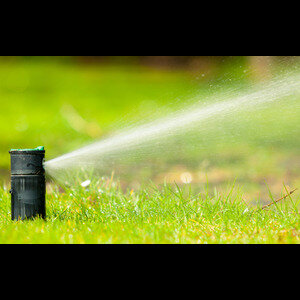Sprinkler systems play a vital role in maintaining the health of your lawn and garden. They provide the necessary hydration to plants, ensuring they flourish in various weather conditions. However, even the most robust irrigation systems can encounter issues over time. Understanding how to repair your sprinkler system not only saves you money but also keeps your landscape looking its best. This comprehensive guide will walk you through common sprinkler problems, repair techniques, and maintenance tips to ensure your system runs efficiently.
Understanding Sprinkler Systems
Sprinkler systems are designed to distribute water evenly across your lawn or garden. They typically consist of several key components:
- Pipes: Transport water from the main supply to the sprinkler heads.
- Sprinkler Heads: Disperse water onto your lawn and garden. They come in various types, including stationary, oscillating, and rotating heads.
- Control Valve: Regulates water flow to the sprinkler heads.
- Timer/Controller: Automates watering schedules, allowing you to set specific times for irrigation.
Understanding how these components work together can help you diagnose problems when they arise.
Common Sprinkler Problems
Several common issues can affect your sprinkler system. Here are some signs that something may be wrong:
1. Broken Sprinkler Heads
Broken or damaged sprinkler heads can lead to inefficient watering. Signs of broken heads include:
- Water spraying in the wrong direction.
- Uneven water distribution in your lawn.
- Sprinkler heads that do not pop up when the system is activated.
2. Low Water Pressure
Low water pressure can result in weak spray patterns and inadequate coverage. This issue may be caused by:
- Blocked pipes.
- Leaks in the system.
- Malfunctioning valves.
3. Clogged Sprinkler Heads
Debris such as dirt, grass, and mineral buildup can clog sprinkler heads, preventing them from working correctly. Signs of clogged heads include:
- Water not spraying or spraying weakly.
- Uneven watering patterns.
4. Leaking Pipes
Leaking pipes can waste significant amounts of water and lead to higher utility bills. Signs of leaks include:
- Puddles of water in your yard.
- A sudden increase in your water bill.
- Wet spots in areas that are not being watered.
5. Sprinkler Timer Issues
If your sprinkler system is not turning on or off at the scheduled times, the timer may be malfunctioning. Signs of timer issues include:
- The system runs continuously without stopping.
- The system does not activate at the scheduled times.
Step-by-Step Guide to Sprinkler Repair
When you encounter a sprinkler problem, follow these steps to diagnose and repair the issue:
1. Diagnosing the Problem
Before you can fix a sprinkler issue, you need to identify the problem. Here’s how:
- Inspect the System: Check each component for visible damage or malfunction.
- Turn on the System: Observe how the water is spraying and look for signs of leaks or pressure issues.
- Check the Timer: Ensure that the timer is set correctly and functioning.
2. Repairing Broken Sprinkler Heads
If you discover a broken sprinkler head, follow these steps to repair it:
- Turn Off the Water: Shut off the water supply to the sprinkler system.
- Remove the Damaged Head: Dig around the head carefully and unscrew it from the pipe.
- Install a New Head: Replace it with a new sprinkler head of the same type and thread size. Ensure it’s seated properly and level with the ground.
- Test the System: Turn the water back on and check for leaks and proper operation.
3. Fixing Low Water Pressure
To address low water pressure, try these solutions:
- Check for Blockages: Inspect the pipes for debris and clear any blockages.
- Inspect Valves: Ensure that all valves are fully open and not partially closed.
- Look for Leaks: If you suspect leaks, mark the wet spots and repair them.
4. Cleaning Clogged Sprinkler Heads
To clean clogged sprinkler heads, follow these steps:
- Remove the Head: Unscrew the clogged sprinkler head from the pipe.
- Soak in Vinegar: Soak the head in a solution of vinegar and water for several hours to break down mineral deposits.
- Scrub with a Brush: Use a soft brush to clean the head thoroughly.
- Reassemble and Test: Reattach the head and turn the system on to check if it sprays correctly.
5. Repairing Leaking Pipes
Leaking pipes can often be repaired with a few simple steps:
- Identify the Leak: Locate the source of the leak by inspecting the pipes.
- Turn Off the Water Supply: Shut off the water to prevent further loss.
- Use a Repair Clamp: If the leak is small, a repair clamp can be placed over the damaged area.
- Replace the Damaged Section: For larger leaks, cut out the damaged section of the pipe and replace it with a new piece, securing it with appropriate fittings.
6. Troubleshooting Timer Issues
If your sprinkler timer is malfunctioning, check the following:
- Reset the Timer: Sometimes, resetting the timer can resolve minor issues.
- Check the Batteries: If your timer runs on batteries, ensure they are fresh and installed correctly.
- Inspect Wiring: Look for frayed wires or loose connections and repair or replace as necessary.
Preventive Maintenance Tips
Regular maintenance can help prevent many common sprinkler problems. Here are some tips to keep your system in top shape:
1. Regularly Inspect Sprinkler Heads
Conduct routine inspections of your sprinkler heads to ensure they are functioning properly. Look for signs of wear and replace any damaged heads promptly.
2. Clean Sprinkler Heads
Cleaning your sprinkler heads regularly can prevent clogging. Remove them and flush them out at least once a season.
3. Check for Leaks
Inspect your sprinkler system for leaks regularly. Look for wet spots in your yard or a sudden increase in your water bill, which may indicate a hidden leak.
4. Adjust Watering Schedule
Adjust your watering schedule based on the season and weather conditions. Reducing watering during rainy periods and increasing it during dry spells can improve your lawn’s health and conserve water.
5. Winterize Your System
In colder climates, it’s essential to winterize your sprinkler system to prevent freezing and damage. Drain the system and blow out any remaining water with compressed air.
When to Call a Professional
While many sprinkler repairs can be handled independently, some situations may require professional assistance. Consider calling a professional if:
- You are unable to locate the source of a leak.
- You experience persistent low water pressure despite troubleshooting.
- The repairs required involve extensive digging or complex pipe work.
- Your timer or control system requires advanced programming or replacement.
Conclusion
Sprinkler repair is an essential aspect of maintaining a healthy and vibrant lawn and garden. By understanding common problems and knowing how to address them, you can save time and money while ensuring your irrigation system works efficiently. Regular maintenance and timely repairs will extend the life of your sprinkler system, providing your plants with the water they need to thrive.
Whether you’re dealing with broken sprinkler heads, low water pressure, or clogged systems, this guide equips you with the knowledge to handle repairs effectively. Remember, when in doubt or faced with complex issues, don’t hesitate to call a professional. With the right care, your sprinkler system can keep your outdoor space lush and beautiful for years to come.

